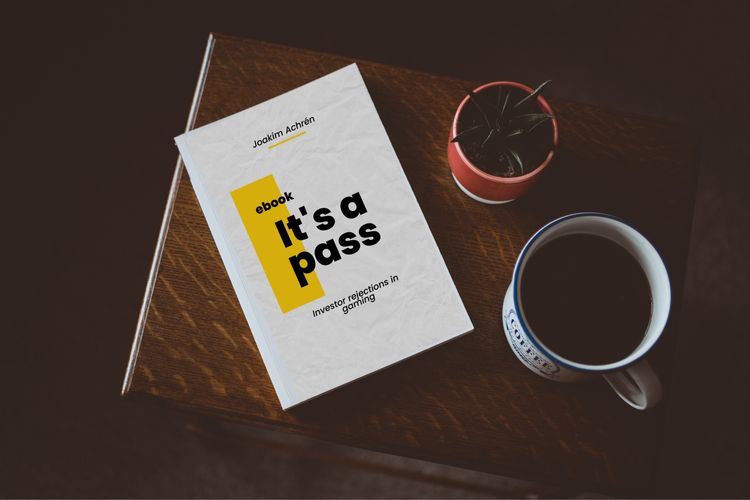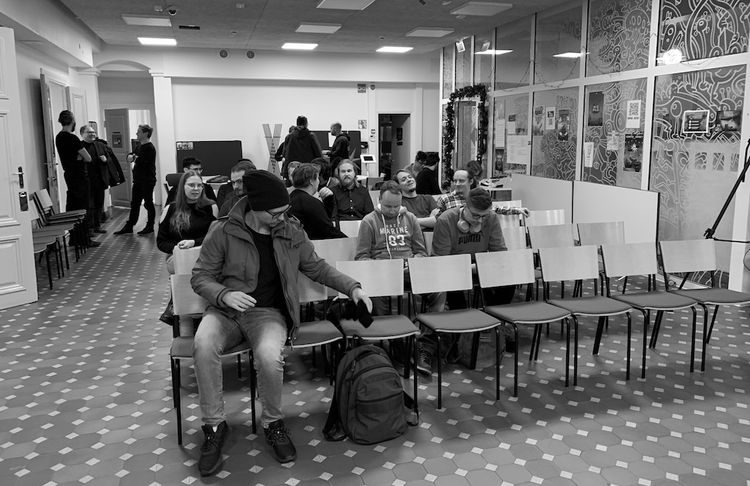Decoding Greatness by Ron Friedman — My Highlights


Get the book from Amazon. The links below are for the Kindle book, so if you’ve bought the Kindle book, that link will open up the Kindle app and show you the highlight in the book.
My highlights
Steve Jobs confronting Bill Games about copying Mac OS to create Windows
“Well, Steve, I think there’s more than one way of looking at it. I think it’s more like we both had this rich neighbor named Xerox, and I broke into his house to steal the TV set and found out that you had already stolen it.” (Location 45)
Copywork can happen anywhere, in any industry
Both King and Hill were utilizing forms of copywork, a technique popularized by Benjamin Franklin and practiced by literary greats F. Scott Fitzgerald, Jack London, and Hunter Thompson. It involves studying an exceptional piece of writing, setting it aside, and then re-creating it word for word from memory, later comparing your version to the original. (Location 259)
What makes copywork so effective is that it forces an artist or writer to do more than simply recall content. Reproducing a piece demands that he or she pay careful attention to the organizational decisions and stylistic tendencies reflected in an original work. It is an exercise that enables novices to relive the creative journey and invites them to compare their instinctive inclinations against the choices of a master. (Location 266)
The process of copying—of carefully analyzing a particular work, deconstructing its key components, and rebuilding it anew—is a transformative mental exercise that does wonders for our thinking. Unlike the experience we get when we passively consume a work, copying demands that we pay meticulous attention, prompting us to reflect on both subtle details and unexpected techniques. (Location 516)
Same goes for the best game makers
no self-respecting chef would knowingly copy the work of others and try to pass it off as their own. They are searching for novel techniques and underlying patterns that can be applied to other dishes, enriching their repertoire. (Location 348)
Why casual strategy games, or “when we add PVP the game will be a hit” never worked
Certain notes harmonize when played together, delivering a pleasing experience. A similar observation can be made of food: (Location 355)
basil + mozzarella + tomato garlic + ginger + soy coconut + mint + chilies Each represents a unique “flavor chord,” a term food writer Karen Page uses to describe combinations that tend to reappear again and again across a range of dishes. (Location 356)
Novelty vs. viability
Studies indicate that it’s novice entrepreneurs who focus on novelty. More experienced entrepreneurs—those who spend decades leading successful businesses and reliably launch profitable ventures every few years—focus on something completely different: viability. (Location 382)
Me at pitching Ironstar and MoiPal in 2007. Also now in 2021 for crypto investment:
Pitch your new business idea to a few friends over dinner, and the degree of enthusiasm you receive will likely hinge on your idea’s originality. Run the same idea by experienced business owners, and they’ll focus instead on customer demand, the logistics of production and deliverability, and projected cash flow. (Location 384)
Competitive benchmarking: This is a good name for gaming as well
Today, car manufacturers routinely dissect their rivals’ cars, except they don’t call the process reverse engineering. They call it “competitive benchmarking.” (Location 455)
Ask questions to make a product
Founders ask big-picture questions (“What’s the real problem here?”), pose what-if scenarios (“What would happen if we stopped accepting cash?”), and, crucially, try to expose root causes (“What leads customers to behave this way?”). (Location 662)
Why copying Clash of Clans didn’t work
there’s a more nuanced explanation for why simply replicating a formula rarely yields memorable results. It’s that exceptional work depends on much more than a proven recipe. It relies on a combination of factors. (Location 937)
you need more than the right formula. You need the right formula for the right person within the right context. That last factor, context, can be especially tricky. All those Twilight clones failed to catch on not because each and every one of them was a dreadful book. They failed because readers’ expectations had shifted. The moment an audience is exposed to a particular experience, it evolves. No longer are fans riveted by a once novel premise, charmed by formerly irresistible characters, or blindsided by what are now conventional plot twists. The audience has adapted, and the formula it found gripping just days earlier now feels insipid and stale. (Location 946)
Switch people in teams to make new creations
If you’ve watched your share of Marvel films, you may have noticed that Thor: Ragnarok is way funnier than Thor: The Dark World. That’s because the latter was directed by a Game of Thrones alumnus while the former was directed by an improv comic. By relying on a core team with a proven recipe and adding an outsider to the group, Marvel is able to tweak its approach just enough for each new movie to feel relatively novel. (Location 1115)
It is often said that the person you are today is largely determined by the five people with whom you spend the most time. It’s because our close friends, colleagues, and family have the power to shape our beliefs and expectations in subtle ways that we often fail to appreciate. All of us have some control over how we spend our time and with whom we surround ourselves, yet we rarely consider changing our social circle as a tool for sparking creative ideas. We should. (Location 1123)
Why networking makes sense
simply aim to connect with a few thought-provoking people and gather one or two stimulating ideas. By actively seeking out and curating a diverse network of friends and colleagues from a wide range of disciplines, anyone can increase the odds of finding novel ideas worth incorporating into their work. (Location 1132)
Copy and change how people build
The right question, therefore, is not “How do I write like Malcolm Gladwell?” It’s “How do I take Gladwell’s formula and make it my own?” (Location 1323)
Data driven and informed diets
Why does tracking have such a profound effect? Because it prompts dieters to reflect on their food choices and gives them an unvarnished look at their calorie consumption. But it’s not just reflecting back on past choices that’s useful—it’s also the effect tracking has on future decisions. (Location 1551)
Simply put, metrics motivate. They lead to better decisions, greater consistency, fewer distractions, and emotional investment. This is the scoreboard principle: measurement begets improvement. Which is why the first step to improving at anything, whether it be losing weight, acquiring a new skill, or mastering a formula you’ve reverse engineered, begins with relentlessly keeping score. (Location 1576)
Goldsmith tracks thirty-six items that range from work-related tasks (minutes spent writing, client check-ins) to health and hygiene (minutes spent exercising, taking vitamins) to showing kindness and empathy to others (complimenting or doing something nice for Lyda, his wife). (Location 1731)
Goldsmith and Franklin draw upon the same methodology to pursue drastically different goals. Goldsmith’s measure is designed to optimize his performance as an executive coach and spouse, while Franklin’s virtues were selected with the intention of reshaping his personal character.II (Location 1742)
How to structure a great piece of content
a prospective idea must tick off four boxes for me to consider it worth tackling. The topic must: (1) relate to work, (2) feature science-based insights, (3) include actionable takeaways, and (4) make the reader feel smarter for having read it. Any idea that fails to meet these fundamentals is quickly abandoned. (Location 1772)
Many free-to-play games become games about accumulating numbers
In many ways, surrogation is a natural consequence of metrics. It’s because numbers are such a powerful motivating force that, in many cases, they induce tunnel vision—even when we are measuring ourselves. (Location 1843)
Are we hitting milestones vs. will player experience be optimal
What Grove is saying is that metrics are powerful motivators. Therefore, if you’re going to set up a scoreboard, you need to ask yourself: What if I’m too successful on this measure? By anticipating the negative consequences of a desirable metric, you can develop a second, paired metric that prevents you from losing sight of the bigger picture. (Location 1872)
Sports vs. knowledge work. Measuring success in hyper-casual is quick
Simone Biles knows instantly whether a daring new jump is successful. She doesn’t need to wait for an annual performance review, hire an executive coach, or initiate an awkward conversation with her manager. That access to ongoing feedback is priceless. It empowers Biles to learn rapidly from her experiences and make informed adjustments in a way that is simply impossible for most workers. (Location 1970)
constant stream of experiment and feedback is a large part of what makes sports so exhilarating. Knowledge work is different. Whether you’re drafting a proposal or developing a website, incessant feedback is both impractical and distracting. (Location 3070)
Self-reflection works. You always find ways to improve the process.
When experimenters tallied up the scores, the results were compelling. Self-reflectors outperformed break-takers by a significant margin, solving over 20 percent more puzzles. A brief invitation to think about what they had learned and how they might apply those lessons in the future was all it took to spark considerable improvement. (Location 2407)
We’ve been taught that education occurs from the outside in—that learning happens through exposure to new information. But that’s only half the equation. Reviewing past events with an eye for insights, patterns, and predictions is how we turn experience into wisdom. (Location 2433)
I have found to be especially useful in promoting self-reflection, learning, and skill development: the five-year journal. (Location 2450)
Imagining yourself in a situation before it happens
As you go about visualizing yourself sitting at your desk, focusing intently, crafting the various components of your draft, you are likely to shrink your anxiety and grow your confidence. Not only is this mental simulation helping you perfect your game plan in advance, it contributes to an expectation of success. (Location 2554)
How to put effective 10k hours in.
The most effective practice, Ericsson found, tackles perceived weaknesses, or elements of an activity that you find especially difficult to execute. Another key is to break down complex tasks and isolate specific aspects, focusing on them one at a time. Ideally, feedback is immediate, enabling you to make incremental adjustments and try again, thereby ensuring that the time you invest practicing translates into gradual improvement and growth. (Location 2641)
Working on our weaknesses is unpleasant, stressful, and hard. But it’s a process that does something crucial for skill development: it breaks the spell of automaticity. (Location 2648)
The discomfort we feel drives us to search for novel solutions and experiment with different paths, making performance breakthroughs more likely. (Location 2650)
Experts don’t achieve mastery through mere repetition. They do so by targeting weaknesses, pursuing stretch goals, and relentlessly pushing the bounds of their abilities. It’s the only way to improve at a task you already perform reasonably well and elude the grasp of automaticity. (Location 2652)
Van Gogh: He deliberately focused on his perceived weaknesses, testing the limits of his abilities. It was not uncommon for him to work and rework the same image repeatedly. As he explained in his letter to a fellow artist, Anthon van Rappard, “I keep on making what I can’t do yet in order to learn to be able to do it.” (Location 3225)
Getting people to open up
Toward the end of your discussion, you may choose to insert two questions, both commonly used by investigative reporters: “Is there anything I didn’t ask that I should have?” and “Who else would you recommend I speak with to learn more?” The latter allows you to turn a single expert interview into several conversations, especially if your expert is kind enough to offer introductions. (Location 2953)





